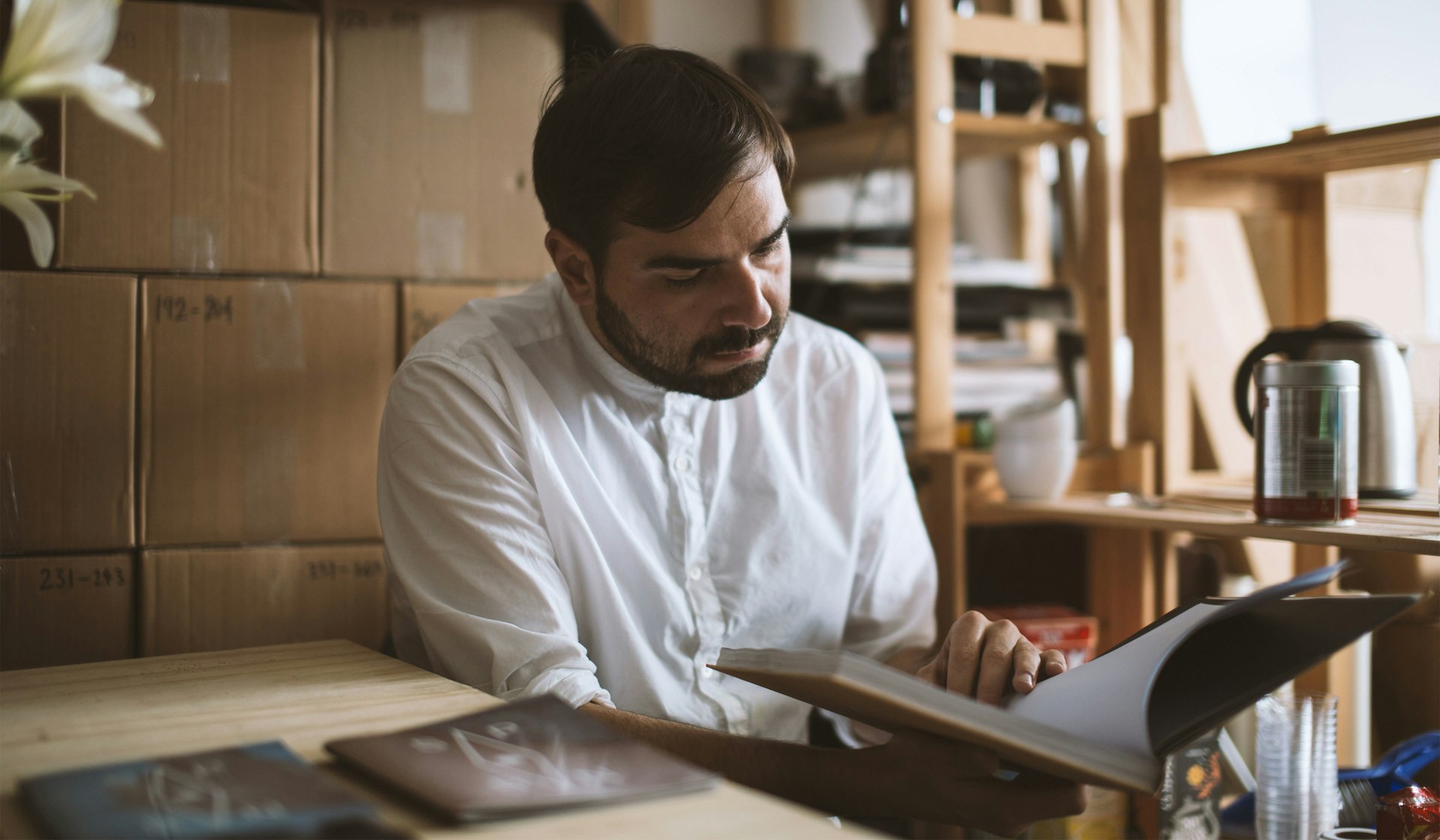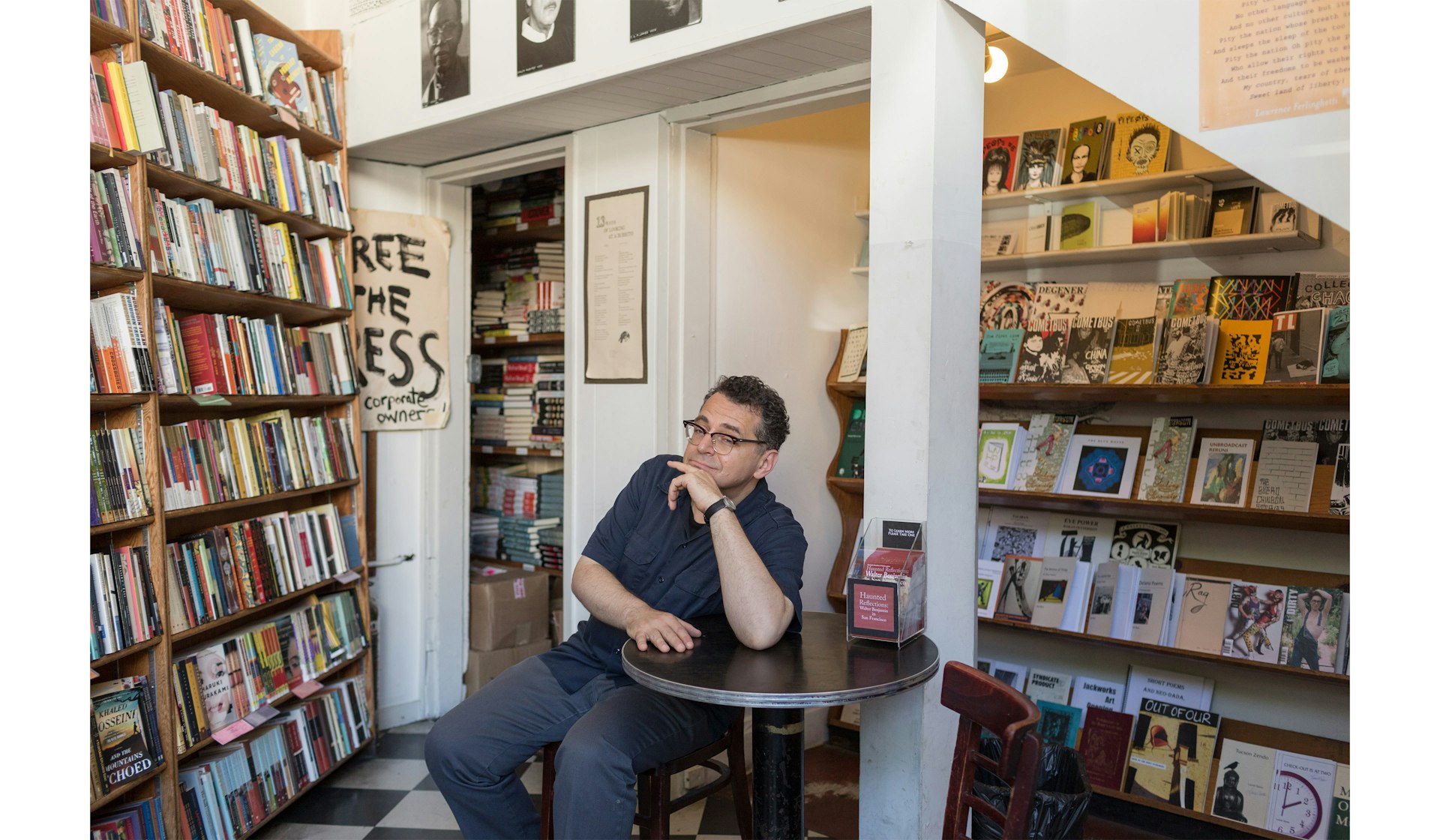
The Forecast 2015: Photography
- Text by Alex King
- Photography by Ed Andrews
Self-published photo books have raised the bar because they don’t have the expectations of a traditional publisher,” says Bruno Ceschel from his base in Dalston. “People can do crazy, interesting stuff because they don’t have anybody stopping them – the only limitation is budget.”
Bruno was among the first to notice the slow-burning self-publishing revolution that has swept the photography community over the past decade. Inspired by the progressive photo books he saw coming out, he founded Self Publish, Be Happy in 2010 to support this fledgling movement and create a platform that would allow photographers to share work and connect with one another, both online and offline – through workshops, live events and gallery takeovers. “There’s no longer a distinction between traditional and self-published books,” says Bruno. “They have just become part of the landscape of publishing.”
As access to technology widens and production costs tumble, photographers are better equipped than ever to bypass traditional gatekeepers and reach audiences directly. “A kid with access to a crap version of InDesign can now make something desirable with minimal design skills,” Bruno explains. “You don’t need the filter of galleries, or colleges, or publishers to say you can make a publication.”
The ephemeral nature of images online are not a threat to tangible photo books (“Online there is a kind of immediacy, while the book is a place where you stop and take your time,” says Bruno) but there’s no doubt that the internet is changing how professionals play the game. “The idea of having a physical folio is redundant, from another age,” he adds. “I know lots of editors who commission photographers based solely on their Instagram feed.”
But perhaps the most exciting consequence of our new lives online, says Bruno, is how photography is shaping society. “Instagram has developed its own language. It’s interesting to see how photographs themselves become a language through the repetition of aesthetics and subjects. People mimic each other, they repeat things endlessly, like we do in a sentence where words and letters are used to compose thoughts and ideas.”
So, is this photography’s latest revolution? “[This new visual] language is propagating ideas and sending those ideas across the world, the change is already happening,” he says. “Images are becoming the way we understand each other – or try to understand each other.”
The Photography Forecast
Focus your lens on these photo trends, curated by Self Publish, Be Happy.
Blaise Cepis
Blaise Cepis is a good example of how photographers are using Instagram to create their own visual language. By repeating tropes and ‘liking’ each other’s posts they create an endless visual stream and a borderless community. Blaise’s feed reveals many of the themes and aesthetics that are currently prevalent on Instagram. instagram.com/itsalrightwerealright
Offprint London, Tate Modern
Photo London at Somerset House, 21 – 24 May 2015 On one hand, platforms like Instagram are producing ever more ephemeral images, but on the other there’s a trend towards the fetishisation of the photograph, in the form of books and prints. Photo London and Offprint are art fairs that really celebrate photographs as objects.
Synonym Study by Nico Krijno
Synonym Study from South African photographer Nico Krijno captures some of the best qualities of self- published photo books. It’s a beautiful mess – there are all types of photographs inside, it’s ambitious, slightly idiosyncratic and a beautiful object to hold. nicokrijno.com
Jeanne Tullen
I think we’re moving towards seeing photography once again as a tool – and I’m interested in how photography is used as an exploration of identities in relation to gender, sexuality, nationality and race. Jeanne Tullen’s work mixes self portraiture, performances and family albums. jeannetullen.com
Augustin Rebetez
I see more and more photographers – especially from the younger generation – who are not weighed down by expectations of what a photographer ‘should be’. Augustin is an exciting example of a photographer who works with a broader canvas, playing with installation, video, drawing and the physicality of space. He creates fantastical walk-in installations. augustinrebetez.com
Thibault Jouvent
Photographers who transition to make longer films really interest me, like Elaine Constantine, a fashion photographer who made the film Northern Soul. I also like photographers who choose to do weird things with video, like Thibault Jouvent. His work captures something that is incredibly mysterious, but pleasurable at the same time. thibaultjouvent.tumblr.com
Find out more about Self Publish, Be Happy.
This article originally appeared in Huck 47 – The Julian Casablancas Issue.
